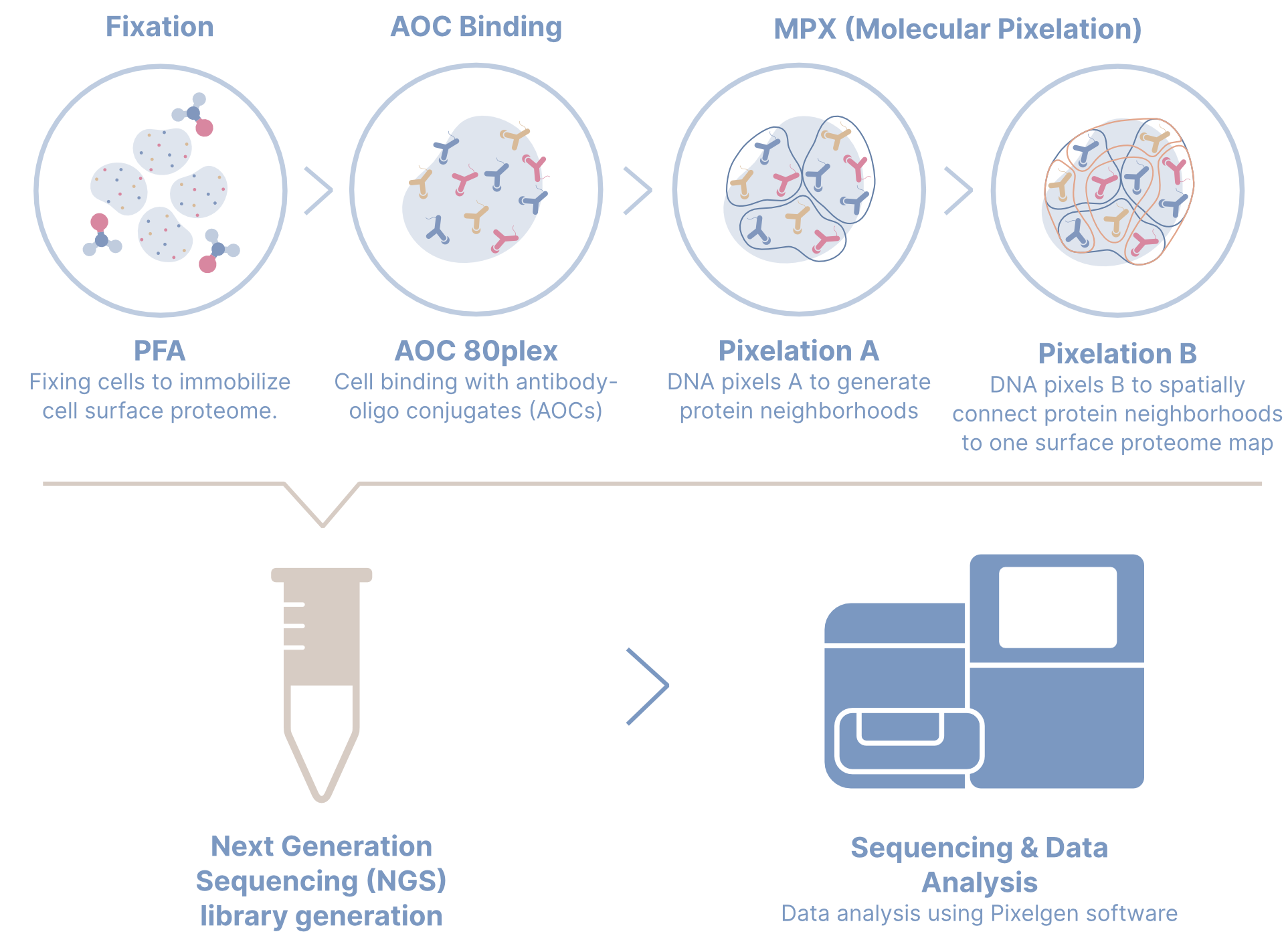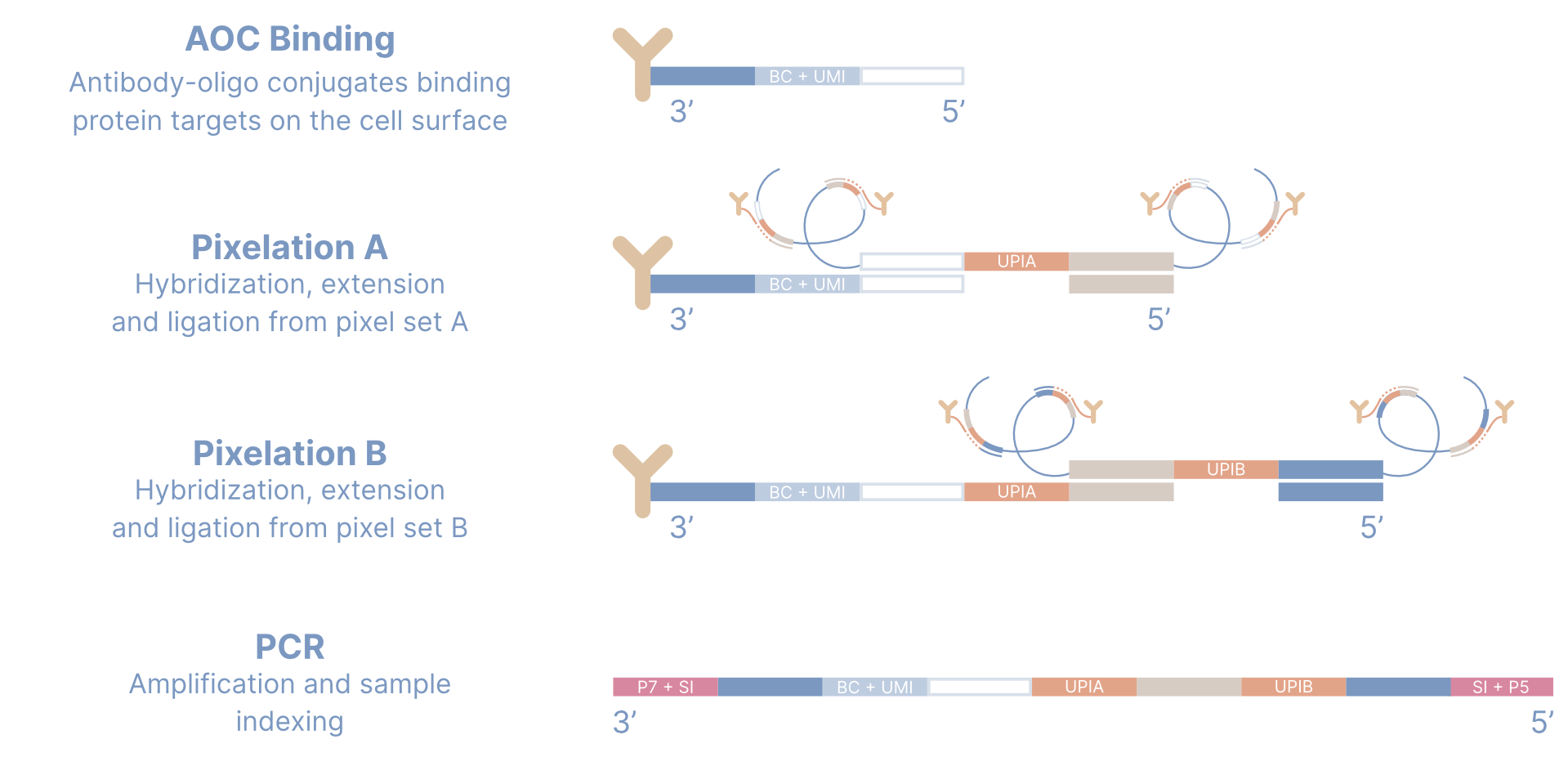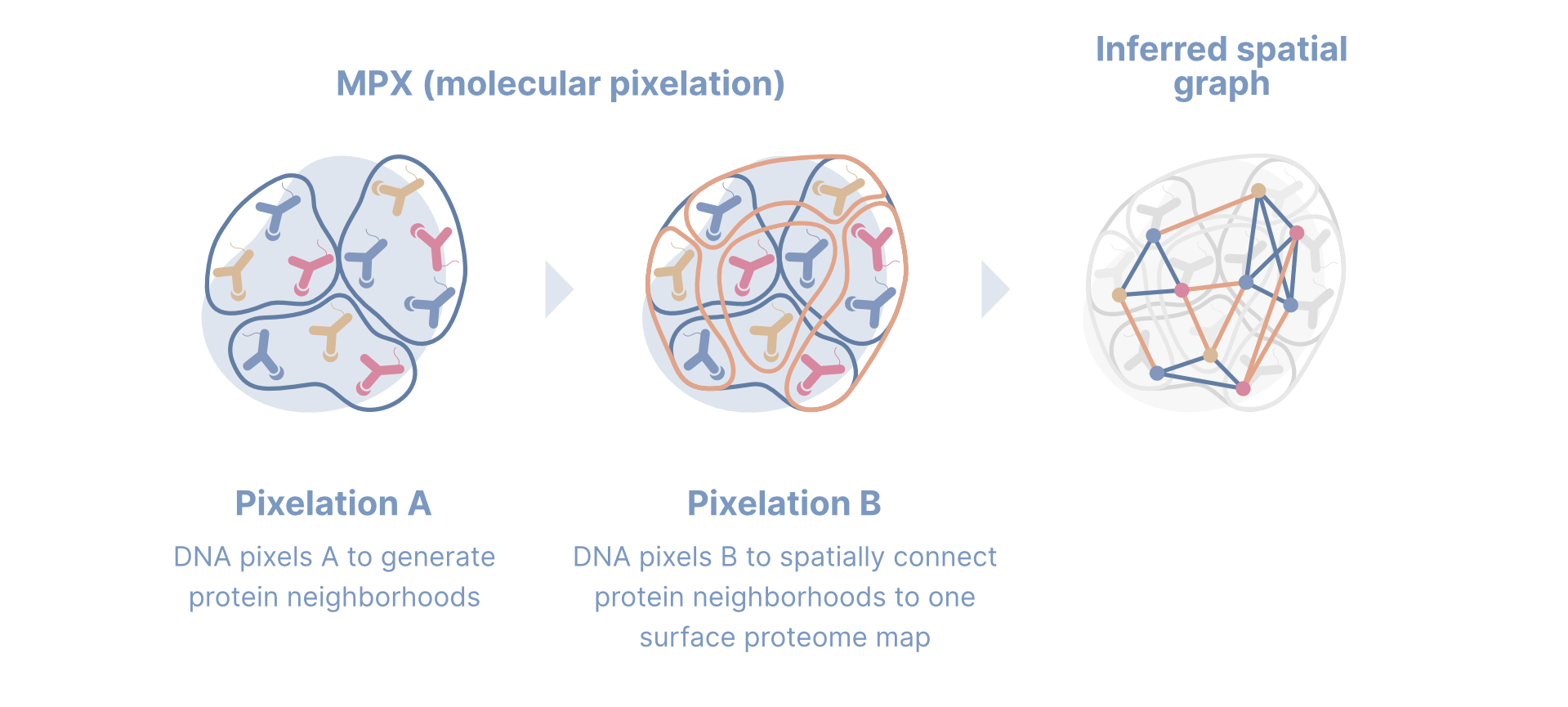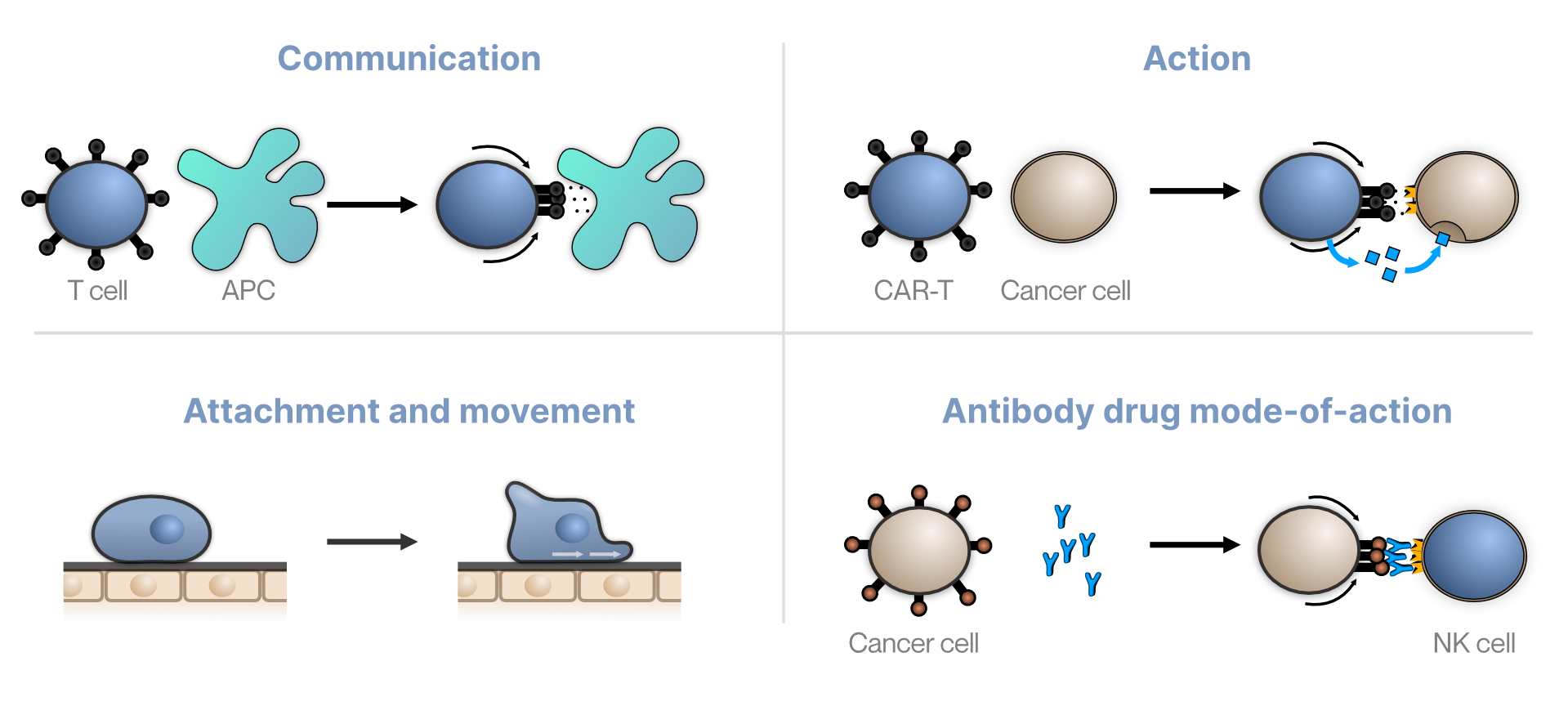What is Molecular Pixelation?
Molecular Pixelation (MPX) is the name of the technology powering the assay at Pixelgen Technologies.
If you wish to know more about it, we suggest you read our MPX Introduction below.
Alternatively, if you are interested in a more detailed understanding of the technology, please refer to our biorXiv preprint titled "Molecular Pixelation: Single cell spatial proteomics by sequencing".
Technology Overview
This is a brief introduction to Molecular Pixelation (MPX) for analysis. It summarizes everything you need to know to successfully conduct your analysis. Complementary tutorials are also available that act as independent self-contained modules.
Pixelgen Technologies' MPX single-cell protocol begins with fixation of cells, followed by binding of the antibody panel that carry oligo conjugates and UMIs identifying antibody molecules, and two rounds of pixelation. These two rounds of pixelation with DNA pixels A and B help create spatial neighborhoods on the cell surface. Later, these neighborhoods are connected to form a single surface proteome map per cell.

In the lower part of the picture, we can see Pixelgen Technologies MPX library. It is prepared after the second round of pixelation, indexed with other samples, and sequenced in one of the compatible common NGS sequencers.
If we take a closer look at the MPX protocol that creates the library, we can see the different steps involved. The DNA pixel A is a concatemer of nucleotide sequences, consisting of two fixed parts (white and brown) and one variable part (orange) containing the UPIA. During the process, a copy of the white part of pixel A binds to the 5' white part of the antibody-oligo conjugate. Simultaneously, an oligo binds to the brown part of pixel A. MPX enzymatically extends from 5' to 3', and ligates, thus imprinting a copy of the UPIA.
DNA pixel A is enzymatically removed and then, a second DNA pixel B produces a second extension of the growing product with the same kind of reaction. First, by binding the brown extended sequence with one of its fixed brown copies and leaving the UPIB imprinted by a 5' to 3' extension/ligation from the blue oligo.
Multiple antibodies are being assayed simultaneously on each of the pixels, which shows the high-throughput efficiency of the method in a parallelized manner.
Finally, each sample undergoes sample indexing and amplification in a PCR machine before it is sent for sequencing.

For a more detailed and accurate description of how MPX works, please, check out our MPX technology paper.
From Cells to Graphs
Pixelgen Technologies offers software for you to process and analyze MPX data. Our basic data structure after processing and the way we choose to represent cellular entities is in the form of cell graphs. But how pixelator achieves that? We will try to explain you that in the next section in order to understand better the data you are going to analyze.
![]()
The first steps of the pipeline involve filtering reads based on several QC metrics, as well as identifying the presence of pixel binding sites (PBS) - the white and brown parts of the forming molecule illustrated in the Figure above. From the sampled reads, the parts that are extracted include the antibody barcode, the unique molecular identifier (UMI) that identifies each molecule, and both the UPIA and UPIB that identify DNA pixels A and B.
Once these parts have been identified, Pixelator attempts to collapse the sampled reads into the original molecules using an approximate nearest neighbor search with the original read data encoded with 2-bits. More information about this and other algorithms can be found in our Pixelator Algorithms section.
![]()
After two successful rounds of DNA pixelation, it is possible to reconstruct bipartite graphs in order to reflect the two-step process of MPX. This is because, due to random chance, DNA pixel A and DNA pixel B will never cover the same section of the cell. As a result, an overlapping pattern of molecules is created, indicating proximity.

The graph step of the pipeline takes each UPIA and UPIB as two different types of nodes and creates vertices. These nodes are linked to each other by the UMI molecule, which is associated with the Antibody class.
All the graphs generated at this stage are referred to as components. This is because many of them are not true cells, but rather small debris or artifacts from the MPX workflow or sample prep.
The example graph shown in the figure below, known as the "Bipartite projection graph", could be one representation of the inferred spatial graph of the cell above, referred to as the "Inferred spatial graph".
![]()
After determining the set of components, cell calling is performed by finding a point where the descending distribution of the ranked antibody count data becomes more pronounced towards smaller components.
This way, the larger part of the rank distribution is considered as cells, while the lower part is filtered out as non-cells. However, we suggest doing further cell filtering post-processing as demonstrated in one of our tutorials.
For more detailed information, please refer to our Pixelator Algorithms section.
![]()
Once we have a set of called putative cells, Pixelator computes and saves all the polarization and co-localization scores in a designated output file called the pxl file.
For a more in-depth understanding of the methods employed by Pixelator to derive these scores, you can refer to our Pixelator Algorithms section.
For a comprehensive explanation of the pxl file format and fields, as well as all the outputs generated during these steps and their formats, please read the **Pixelator ** Outputs section.
![]()
The possibilities to study biology at the single cell level are immense with Molecular Pixelation. Proteins play a crucial role in various cell biology processes, and it is up to you to decide how you wish to utilize and analyze Molecular Pixelation in your research with the assistance of * Pixelator*.
